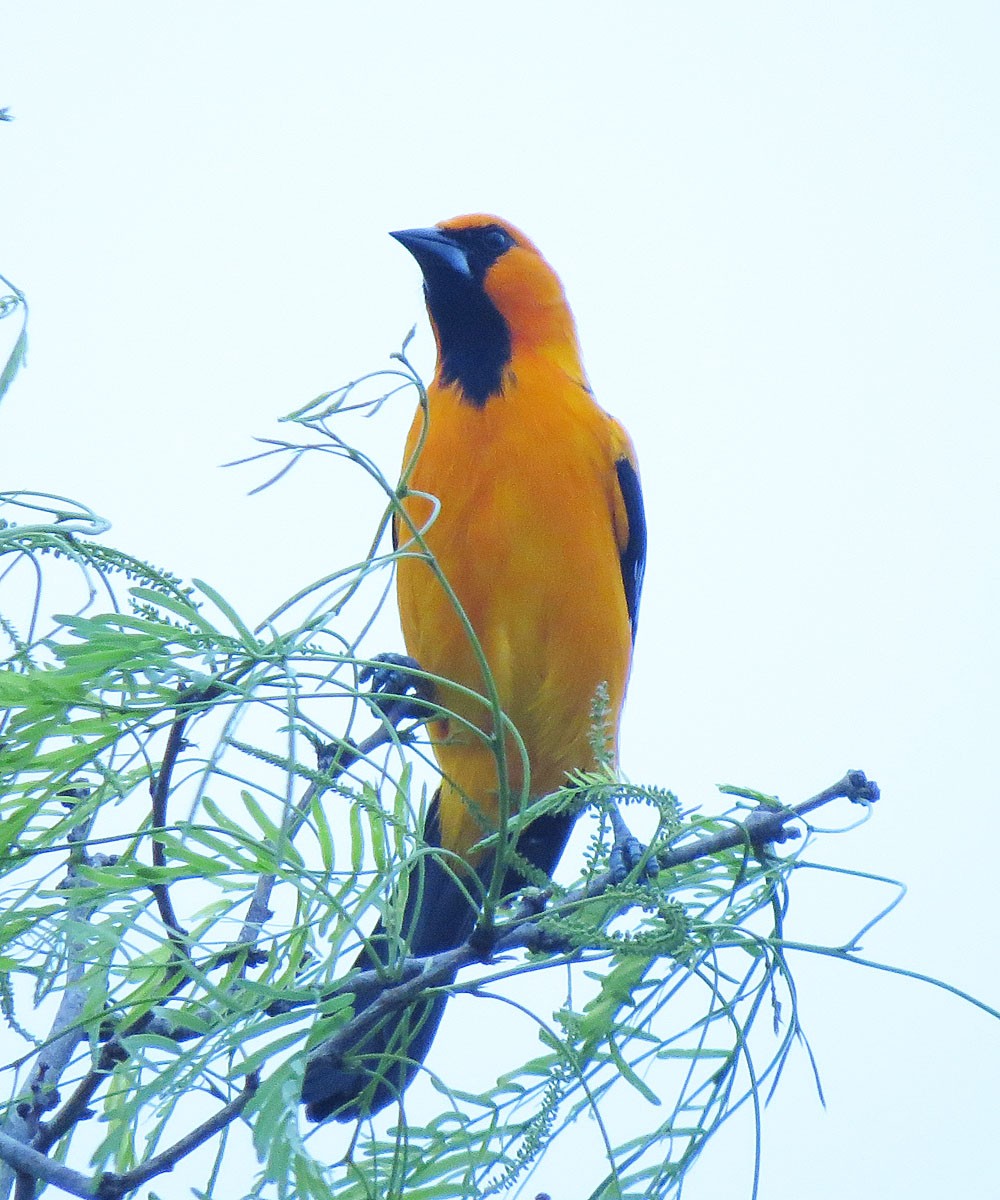Altamira Oriole
A species of New world orioles Scientific name : Icterus gularis Genus : New world orioles
Altamira Oriole, A species of New world orioles
Botanical name: Icterus gularis
Genus: New world orioles
Content
Description General Info
 Photo By Don Faulkner , used under CC-BY-SA-2.0 /Cropped and compressed from original
Photo By Don Faulkner , used under CC-BY-SA-2.0 /Cropped and compressed from original Description
Both males and females have a black mandible and throat, as well as a black back and long black tail. Wings are black, but the remiges and rectrices (flight feathers) are fringed with white. These form a single white wing bar and white wing spots when folded. The secondary coverts form orange epaulets. The underside is almost uniformly orange or yellowish-orange. In general, immature specimens have an olive back, and a dull yellow on its head and its body. The first-year bird is similar to the adult, but it has an olive, not black, back, and yellow-olive tail. 
Size
23-25 cm (9-10 in)
Life Expectancy
13 years
Nest Placement
Tree
Clutch Size
2 - 6 eggs
Feeding Habits
Altamira Oriole's diet comprises nectar, insects, and various fruits, including hackberry and anagua. Altamira Oriole forages through the tree foliage and on the ground, capturing prey such as ants and crickets, and may also drink nectar by bill insertion or nectar robbing. They frequent feeding stations for fruits and sunflower seeds.
Habitat
Altamira Oriole typically inhabit open tropical woodlands and edges, thriving in lightly wooded areas, particularly in the Rio Grande Valley. They favor riparian corridors, thorn forests, and well-wooded suburbs, even adapting to human-altered landscapes like orchards and farms. Preferred vegetation includes Mexican ash and mesquite trees. Though widespread from the coastal plains, their elevation range extends up to 5,000 feet, with a presence in forested habitats that have been altered by agricultural deforestation.
Nest Behavior
Altamira Oriole's females create nests over water or clear ground, mostly on the northwestern branch side. They participate in nest-building, egg-laying, and nurturing the young. The timing and pattern of these activities align with the species' reproductive cycle, which is typical for orioles.
Nest Characteristics
Altamira Oriole constructs a distinctive long, hanging, pear-shaped bag nest. These are woven from materials like vines, palm frond strips, grasses, and bark strips. The interior is padded with softer elements such as plant down, straw, or feathers. The entrance is at the top, with nests averaging 1 to 2 feet in length and up to 6 inches wide, often suspended 30 feet high.
Dite type
Insectivorous
General Info
Feeding Habits
Bird food type
Bird Feeder Type

Platform
Sounds
Call
Recording location: Mexico
Call
Recording location: Mexico
Behavior
Altamira Oriole are typically monogamous, staying with their partners throughout the year. They engage in cooperative foraging and communication through distinct calls. Unlike their behavior in Mexico, in the United States, they do not form flocks, though post-nesting family groups may forage together. Males play a sentinel role during the nesting period, which females construct over about three weeks. While females are solely responsible for incubation and brooding, males assist in feeding both the female and the offspring. Although not highly territorial, altamira Oriole do exhibit defensive posturing in the rare event of nest intrusion by their own kind. Interestingly, they often nest in proximity to more aggressive bird species for added protection against common threats.
Species Status
Not globally threatened.